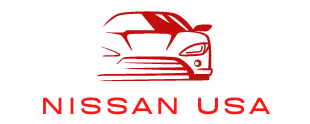2026 Nissan Leaf Gets Native NACS Port for Direct Tesla Supercharger Access
Leaf Revolution: 2026 Model Ditches CHAdeMO for NACS and Superchargers
The venerable Nissan Leaf, one of the pioneers that kickstarted the mainstream EV revolution, is poised for a significant upgrade beyond just styling or battery tech.
Get ready because the next generation, expected around the 2026 model year, is ditching the CCS combo plug-in in favor of Tesla’s North American Charging Standard (NACS) port right from the factory.
This isn’t just a minor plug swap; it’s a fundamental shift promising to dramatically improve the charging experience for future Leaf owners across the USA.

Why the Switch to NACS is a Big Deal for the Leaf
Let’s get straight to the point: access. While the current Combined Charging System (CCS) network has been growing, Tesla’s Supercharger network remains the gold standard in North America for its sheer size, widespread availability, and often-praised reliability.
By integrating the NACS port directly into the next-gen Leaf, Nissan is essentially handing owners the keys to thousands more fast-charging stations.
Imagine planning a road trip in your new Leaf without meticulously mapping out CCS-only locations or worrying if the charger you arrive at will work.
The NACS integration aims to make long-distance EV travel significantly less stressful and seamless, leveraging the most extensive fast-charging infrastructure.
This move puts the upcoming Leaf squarely in line with major players like Ford, GM, Rivian, and others who have also announced commitments to NACS.
What Will NACS Charging Look Like on the New Leaf?
While official details on the 2026 Leaf are still emerging (rumors suggest a shift towards a crossover-inspired design based on the Chill-Out concept), the charging experience should be straightforward.
- Native Port: No more fumbling with adapters for routine charging on the Tesla network. The NACS port will be built-in and ready to accept a Supercharger plug directly.
- Simplified Charging: Pull up, plug in, and charge. While details of payment systems and app integration between Nissan and Tesla are still being finalized across the industry, the goal is to have a user-friendly experience.
Expanded Options: Owners won’t lose access to existing CCS chargers. While the car’s native port will be NACS, adapters allowing NACS vehicles to plug into CCS stations are expected to be readily available (likely provided by Nissan initially or available for purchase), ensuring maximum flexibility.
A Bridge for Current Owners
Nissan isn’t leaving current Leaf (or Ariya) owners behind. The company has already confirmed plans to offer CCS-to-NACS adapters, likely beginning sometime in 2025.
This means even before the NACS-native models hit showrooms, existing Nissan EV drivers can tap into the Supercharger network, albeit with an adapter.
The Leaf Recharged: More Than Just Electrons
The move to NACS signifies more than just a hardware change for the Leaf; it represents a commitment to enhancing owner convenience and tackling one of the biggest hurdles for potential EV buyers: charging anxiety.
By aligning with the burgeoning NACS standard, Nissan ensures its next-generation EV staple remains competitive and appealing in an increasingly crowded market.
For a car that has always represented accessible electric mobility, adding seamless access to the nation’s largest fast-charging network is arguably one of the most significant upgrades in the Leaf’s long history.
As we await the full reveal of the redesigned Leaf, the confirmation of NACS charging is a powerful signal: Nissan is serious about plugging its future EVs directly into the most convenient charging ecosystem available. Watch as we learn more about the next chapter for this iconic electric nameplate.
Why This NACS Switch is a Game-Changer for the Leaf
Let’s cut to the chase: range anxiety isn’t just about how far you can go but how easily you can recharge when you need to.
By adopting NACS, Nissan is essentially handing 2026 Leaf owners the keys to the most extensive and arguably most reliable DC fast-charging network in North America – the Tesla Superchargers.
- Massive Network Access: Forget nervously checking third-party apps, hoping a CHAdeMO or CCS charger is available and functional. The 2026 Leaf gains access to thousands (over 17,800 compatible V3/V4 stalls and growing) of Supercharger locations.
- No Adapter Juggling (for Supercharging): While current Ariya owners need to purchase a Nissan-approved NACS adapter (around $235 MSRP) to use Superchargers, 2026 Leaf drivers won’t need extra hardware for plugging into Tesla’s network. It’s designed to be a seamless, native experience.
- Simplified Road Trips: Combining the NACS port with the Leaf’s targeted range boost—Nissan is aiming for over 300 miles EPA estimate on some trims, a huge leap from the current 212-mile max—transforms the Leaf from a capable commuter into a genuine road tripper.
- Faster Charging (Expected): Nissan officials have confirmed the new Leaf will boast significantly faster charging speeds compared to the outgoing model’s somewhat pokey 50-kW DC limit. While exact figures are pending, the NACS port and likely inclusion of a much-needed liquid-cooled battery system (goodbye, air-cooled limitations!) should support higher charging rates, getting you back on the road quicker.
The original Leaf put EVs on the map for many Americans. By equipping the completely redesigned 2026 model with a native NACS port, Nissan isn’t just updating its icon; it’s strategically plugging it directly into the charging infrastructure that holds the most sway in the US market.
This move eliminates a major adoption hurdle and instantly makes the new Leaf a far more compelling and practical choice for everyday driving and long-distance travel. Forget the past limitations – the 2026 Leaf is ready to charge ahead.

